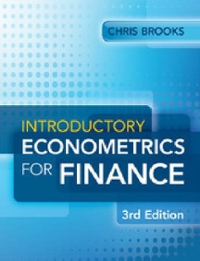Question
I didn't use this formula for the VAN (at the bottom) and do not understand it : VAN= -200.000 + 80.000/1,08 + 138.550/1,08^2 + 131.406/1,08^3
I didn't use this formula for the VAN (at the bottom) and do not understand it: VAN= -200.000 + 80.000/1,08 + 138.550/1,08^2 + 131.406/1,08^3 + 139.664,92/1,08^4 + 178.345,35/1,08^5
3.0 Absolute Return
The company Derabel, S.A. is considering buying a new machine for its production process. This project means an initial cost of 200,000 and the machine is estimated to have a useful life of 5 years. The maximum productive capacity of the machine is 200,000 units per year. However, the first year it is expected that the activity will be 70% of the maximum installed capacity, reaching 100% from the second year.
During the first year, the unit sales price will be 2.50, the unit variable cost 1.50 and the fixed annual cost 60,000, resulting in cumulative yearly increases of 4% in the price of the product sale, 3% on variable costs and 2% on fixed costs.
Also, it is assumed that:
- The company uses a linear depreciation system, and the residual value of the machine is 25,000. Besides, the sale value of the machine at the end of its physical life will be 30,000 that will be charged in cash.
- The nominal discount rate (kN) used by the company is 8% per year and constant for the planned period.
- The tax rate that taxes the benefits is 25%. Taxes are paid in the period following their accrual.
- All production is sold in the reference period.
- All income and expenses are charged and paid in cash.
With the above data, determine the Net Cash Flows after taxes of the project described above. Calculate the net absolute return.
| Year 1 | Year 2 | Year 3 | Year 4 | Year 5 | |
| Production in units | 140000 | 200000 | 200000 | 200000 | 200000 |
| Unit Sale Price (in Euros) | 2.50 | 2.60 | 2.70 | 2.81 | 2.92 |
| Revenues (in Euros) | 350000 | 520000 | 540800 | 562432 | 584929.3 |
| Costs: | |||||
| Variable cost per Unit (in Euros) | 1.50 | 1.55 | 1.59 | 1.64 | 1.69 |
| Total variable cost (in Euros) | 210000 | 309000 | 318270 | 327818.1 | 337652.6 |
| Fixed cost per year (in Euros) | 60000 | 61200 | 62424 | 63672.48 | 64945.93 |
| Gross income (in Euros) (Revenues-Variable cost-Fixed cost) | 80000 | 149800 | 160106 | 170941.4 | 182330.7 |
| Depreciation expense (in Euros) | 35000 | 35000 | 35000 | 35000 | 35000 |
| Net income before taxes (Gross income - Depreciation) | 45000 | 114800 | 125106 | 135941.4 | 147330.7 |
| Tax rate 25% | 11250 | 28700 | 31276.5 | 33985.36 | 36832.68 |
| Net income after fax | 33750 | 86100 | 93829.5 | 101956.1 | 110498 |
| +Depreciation (Added back) | 35000 | 35000 | 35000 | 35000 | 35000 |
| Annual cash flows | 68750 | 121100 | 128829.5 | 136956.1 | 145498 |
| Terminal cash flow on sale of machine | 0 | 0 | 0 | 0 | 30000 |
| Cash flows in each Year | 68750 | 121100 | 128829.5 | 136956.1 | 175498 |
Working notes:
1. Depreciation is on straight-line method, so, annual depreciation = (Initial cost - Residual Book Value) / Useful life of machine
= (200,000 - 25,000) / 5 = 35,000
2. Depreciation is added back to net income after taxes because the question asks net annual cash flows and depreciation being a non-cash item needs to be added back to arrive at cash flows (post-tax).
3. Since machine will be sold for 30,000 at the end of Year 5, same is added in cash flows at the end of Year 5.
Net absolute return is calculated as simple returns on investment without taking into consideration the holding period of investment, discount rate, etc. It is simply returns in absolute terms, i.e, (Returns - Cost) / Cost *100
Here, the returns post-tax for each year (income after tax) is calculated in the table above. Further, the machine is sold at the end of the period at $5000 more than its residual value.
Incorporating these returns, total returns from the project = 33750 + 86100 + 93829.50 + 101956.10 + 110498 + 5000 = 426,133.50
Initial cost = 200,000
So, net absolute return = 100 * (426,133.50 - 200,000 ) / 200,000
= 113.07 %
VAN= -200.000 + 80.000/1,08 + 138.550/1,08^2 + 131.406/1,08^3 + 139.664,92/1,08^4 + 178.345,35/1,08^5
Step by Step Solution
There are 3 Steps involved in it
Step: 1

Get Instant Access to Expert-Tailored Solutions
See step-by-step solutions with expert insights and AI powered tools for academic success
Step: 2

Step: 3

Ace Your Homework with AI
Get the answers you need in no time with our AI-driven, step-by-step assistance
Get Started


